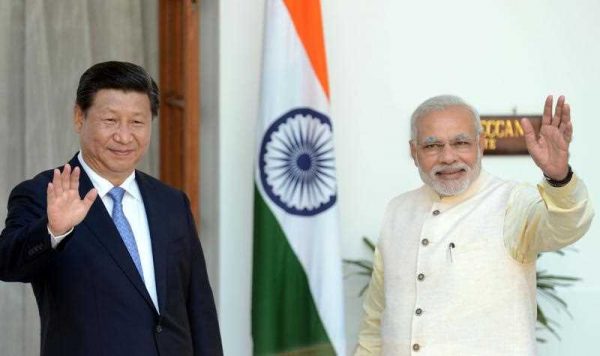Trade between the countries increased from US$2.92 billion in 2000 to US$74 billion in 2011 and is expected to reach US$100 billion by 2015. Growth in trade has prompted a spurt in investments between the countries as well. China’s accumulated investment in India reached US$57.6 million while India’s investment in China reached US$44.2 million by December 2011.
The recent establishment of the New Development Bank (NDB) — a BRICS initiative — is another positive sign for trade relations. With the headquarters of the NDB in Shanghai, and its presidency with India, it is likely to strengthen bilateral economic and political ties.
But the relationship has run into trouble. In 2012 economic ties — the key driver of good Sino–Indian relations — took a hit when the bilateral trade in goods fell by almost 10 per cent from 2011. India’s trade imbalance with China dramatically increased the trade deficit. The trade deficit widened from US$28 billion in 2010–11 to US$40.8 billion in 2012–13. The security relationship also remains tense with continuing border disputes between the two countries. An absence of trust between China and India is another major problem.
But Chinese president Xi’s recent visit to India on 17 September has started a new chapter in China–India relations. President Xi, as expected, presented a bundle of gifts and promises to strengthen the relationship. The first day of the visit saw the signing of three MoUs with the state government of Gujarat and US$400 million being pumped into the country.
The first agreement was signed between the China Development Bank and Industrial Extension Bureau of the Gujarat government for developing industrial parks in the state. The second pact was signed between China’s Guangdong province and the Gujarat government for developing a ‘sister province’. It covered a broad spectrum including trade and industry, environmental studies, science and technology, waste-water management, sports and infrastructure. The third MoU was between Ahmadabad Municipal Corporation and China’s Guangzhou province. It provided for knowledge sharing on various issues such as health, culture, science and technology, environment and education.
Also, Indian commerce minister Nirmala Sitharaman signed the ‘Five Year Trade and Economic Development Plan’ with Chinese counterpart Gao Hucheng. The agreement laid down a roadmap to promote sustainability and lessen the bilateral trade imbalance, which currently stands at US$35 billion in favour of China. The Five Year Plan also proposes to strengthen investment cooperation in order to realise US$20 billion in investment from China in the coming five years — as promised by the Chinese president.
The two commerce Ministers also discussed measures to enhance the market accessibility of Indian goods such as pharmaceuticals, farming and fuel products in China. And the Chinese president announced US$7 billion for the Pune and Gandhinagar industrial parks. Cash-rich China is also expected to make a US$50 billion investment for the modernisation of Indian railways and another US$50 billion for infrastructure development. This is seen as a strategy to outdo China’s rival — Japan. Indian and Chinese companies have also signed preliminary deals worth more than US$3 billion in aircraft leasing and telecommunications.
Under these various agreements, China and India are set to increase cooperation in trade, space exploration and civil nuclear energy.
But the border issues remain contentious. India does not agree with Beijing’s stance on Arunachal Pradesh and has sent a strong message by not signing the proposed Visa Liberalisation agreement, which would have allowed easier access to India for Chinese professionals and entrepreneurs.
Modi wants India to play an important role on the global stage and is enhancing its partnership with Japan and the US. Modi’s Japan visit led the US to endorse the India–Japan strategic partnership and the strengthening of trilateral cooperation to address issues related to security, economics, nuclear proliferation and energy. Some see this trilateral partnership as a precautionary move against China.
Still, the recent visit of Chinese president Xi has undoubtedly succeeded in adding new zest and meaning to India–China relations. However, it is clear that the full potential in trade and other areas of cooperation will not be realised until peace is restored on the border. With this in mind, Modi has urged the Chinese president for a speedy and early resolution to the boundary disputes.
Geethanjali Nataraj is a researcher at the Observer Research Foundation, New Delhi and policy lead for the Knowledge Partnership Program for DFID-IPE Global
Richa Sekhani is a researcher at the Observer Research Foundation, New Delhi.

